People
‘It Was a Long Day’: We Spent 18 Frenzied Hours With Art Dealer Johann König as He Raced to Reopen His Berlin Gallery Post-Lockdown
A day in the life of a prominent Berlin gallerist in a socially distanced art world.
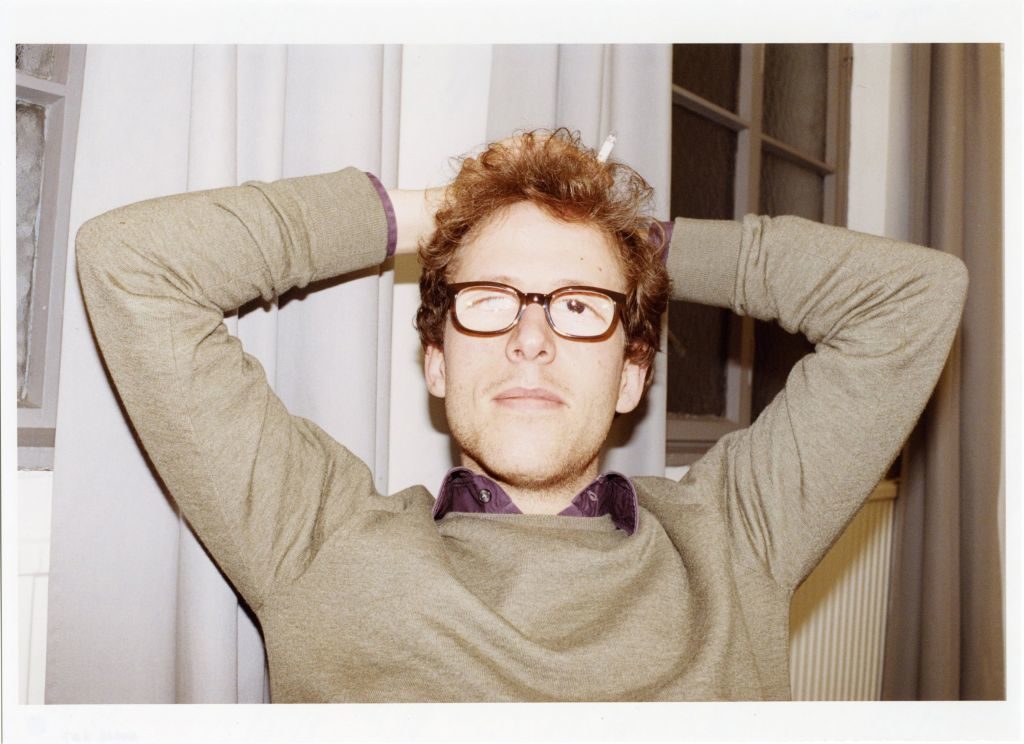
A day in the life of a prominent Berlin gallerist in a socially distanced art world.

Nate Freeman

At 9:00 a.m. last Wednesday, Johann König was having coffee on the terrace of his Berlin apartment. It was sunny, with a few scattered clouds, and König—one of the most famous art dealers in the global gallery capital, who has outposts in London and Tokyo to complement his giant Berlin space in a former church—was thinking about how to show art again. After nearly two months in lockdown, the gallerist was getting ready to open up to the public.
Thankfully, he didn’t have a commute that would require a mask and gloves.
“I live in the gallery,” he said. “I live where the preacher man used to live.”
I was not on that terrace in Berlin last Wednesday morning. I was in the Catskills, and the journey to Galerie König’s converted Brutalist chapel in Berlin’s Kreuzberg neighborhood would not have been deemed “essential.”
But König had agreed to engage in an unorthodox reporter-subject dialogue for the sake of a socially distanced profile of sorts. I wanted to remotely tail him over the course of a day, “watching” as he hustled for sales, installed a real show in an actual gallery, and generally waded back into the art-world social life that’s still very much on hold in London, New York, and Los Angeles.
After finishing his coffee, König went down to what’s become a makeshift gym—one with an Andi Fischer painting on the wall and, on the floor, an elephant box by Nicolas Party first shown at the Bonner Kunstverein in 2014.
“To be honest, it’s more rare than often,” he said of his exercise regime in a recorded message that he texted me on Whatsapp. “There’s a bike and a rowing machine—it’s too hard.”
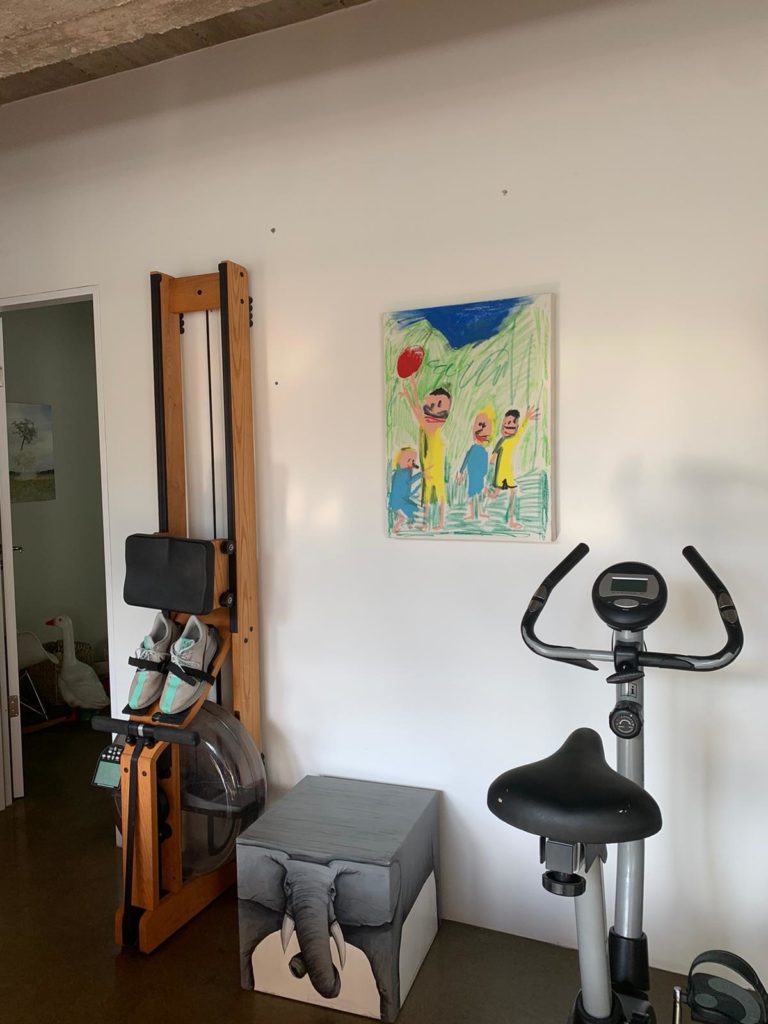
On the wall, a work by Andi Fischer. On the floor, a work by Nicolas Party. This and all photos below by and courtesy Johann König.
After his workout, König walked from his living quarters over to the neighboring gallery space, the monumental former church nave that’s big enough for about a dozen gallery-goers to practice social distancing, even if the thought of visiting a gallery was a little bonkers to the reporter receiving images of such a space on his phone. When he entered, König saw what appeared to be a gigantic grid of some kind.
“Elmgreen and Dragset’s new commissioned work is a big tennis court,” he explained. A new show by the artist duo opens at the gallery on May 16.
König promised he’d return to check on the installation’s progress, but it was time to switch hats from art dealer to schoolteacher. He and his wife, Lena König, are taking turns tackling the curriculum, and he took over instruction so his wife could work on the gallery’s magazine, which she edits.
His daughter seemed to be an engaged student, kneeling on the floor next to a Tatiana Trouvé sculpture with her nose buried in a book in which a fairy-chef explained how to make leckere blumchen cupcakes.
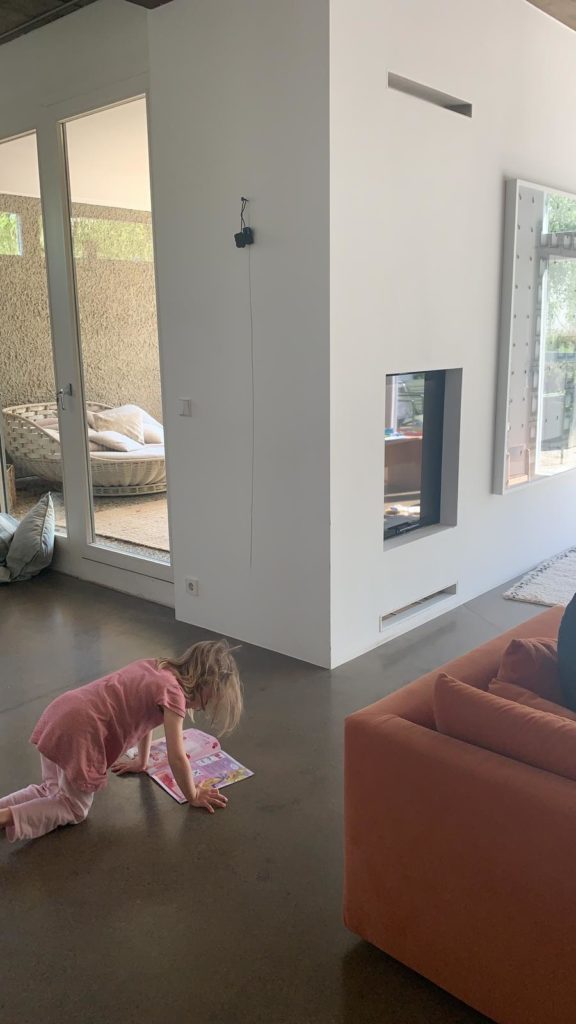
Johann König’s daughter in “school” with a Tatiana Trouvé sculpture.
While she read, it was time to check on the main office space, which was just beginning to come to life again as directors were allowed to leave their houses.
“The gallery I would say is about half-staffed,” König said, walking over to a table where galleys for the latest edition of the magazine were laid out.

Pandemic or no pandemic, König’s magazine will come out on schedule. Above, Editor in Chief of the KÖNIG magazine, Timon Karl Kaleyta, with a painting by Karl Horst Hödicke.
“There are two cover options, and I think we’re going to end up publishing both covers of work by Friedrich Kunath.” König walked past one staffer who flashed a hearty thumbs up, mask plastered across his face.
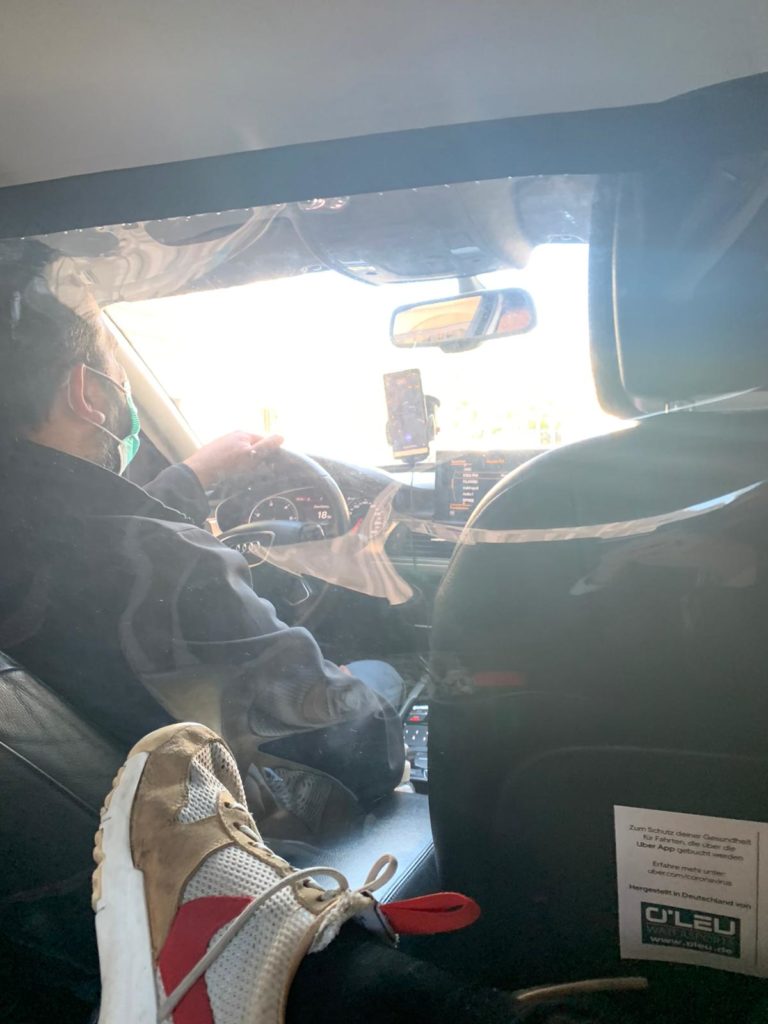
König in a taxi on his way to a museum opening.
Next, König donned a mask and hopped in a taxi—the driver separated from the rider by a thick slice of plastic—speeding toward downtown Berlin to attend something that from where I was sitting sounded like an ancient ritual: an opening reception at a museum. It was a survey of work by artist duo Christo and Jeanne-Claude from the Ingrid & Thomas Jochheim Collection, hosted by Palais Populaire, the space maintained by Deutsche Bank.
“It’s a relief to be going back to shows again after eight weeks,” König said.
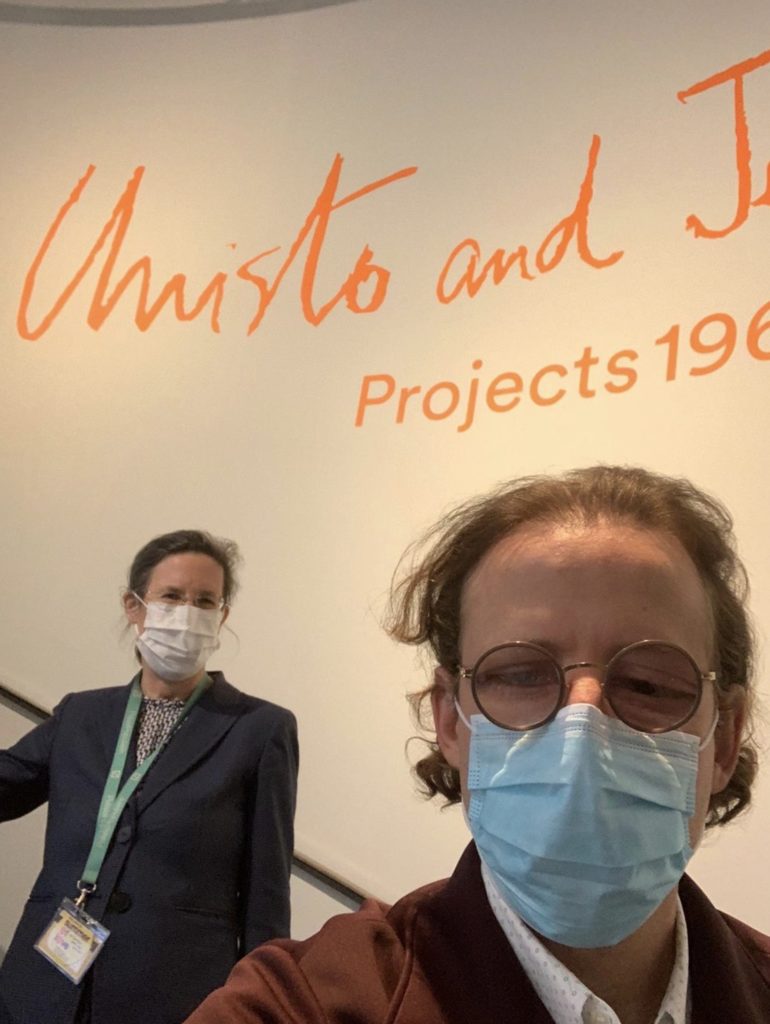
Johann König ventures to an opening in Berlin alongside Senja von Reichenbach, director of the Deutsche Guggenheim.
A decent amount of visitors, all wearing masks, flowed through the show, which consisted of striking studies for the couple’s public works. The focus was on Wrapped Reichstag, for which they covered the Berlin monument in a million square feet of fabric in 1995.
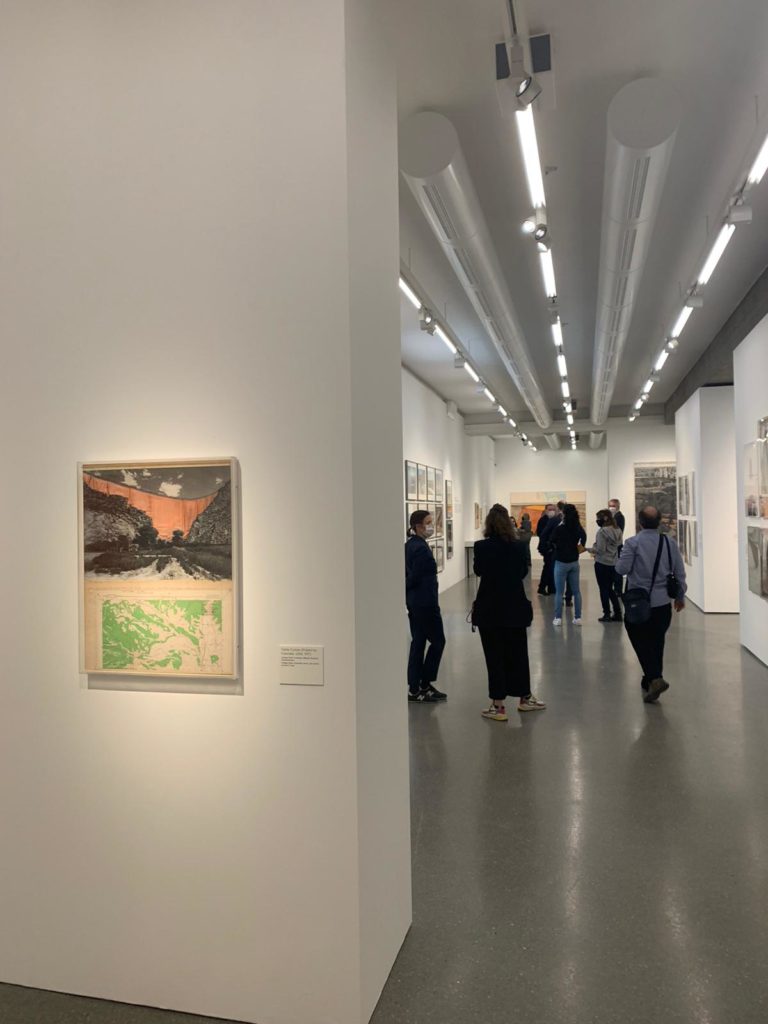
Inside the Palais Populaire.
Like at openings before the lockdown, König worked the halls—but this time, he kept his distance and spoke through a mask to Deutsche Bank art collection curator Friedhelm Hütte and members of the Jochheim family.
“It was very nice to see another show—one that’s not my own,” he said. “It felt actually quite natural, like a small private opening, and I saw all the editors of the art magazines there, too.”
It was a quick stop. By 1:15 p.m., König was heading back to the gallery to have lunch with his family. Alas, with König and his wife both trying to keep the sprawling business functioning, there isn’t much time to experiment with sourdough starters.
“A lot of people do home cooking and seem to really enjoy it, but we limit ourselves to delivery services,” König said. “Having a company to run doesn’t leave space for cooking.” Today, lunch was an attractive spread of pizza, pasta, and salad from Domino’s.
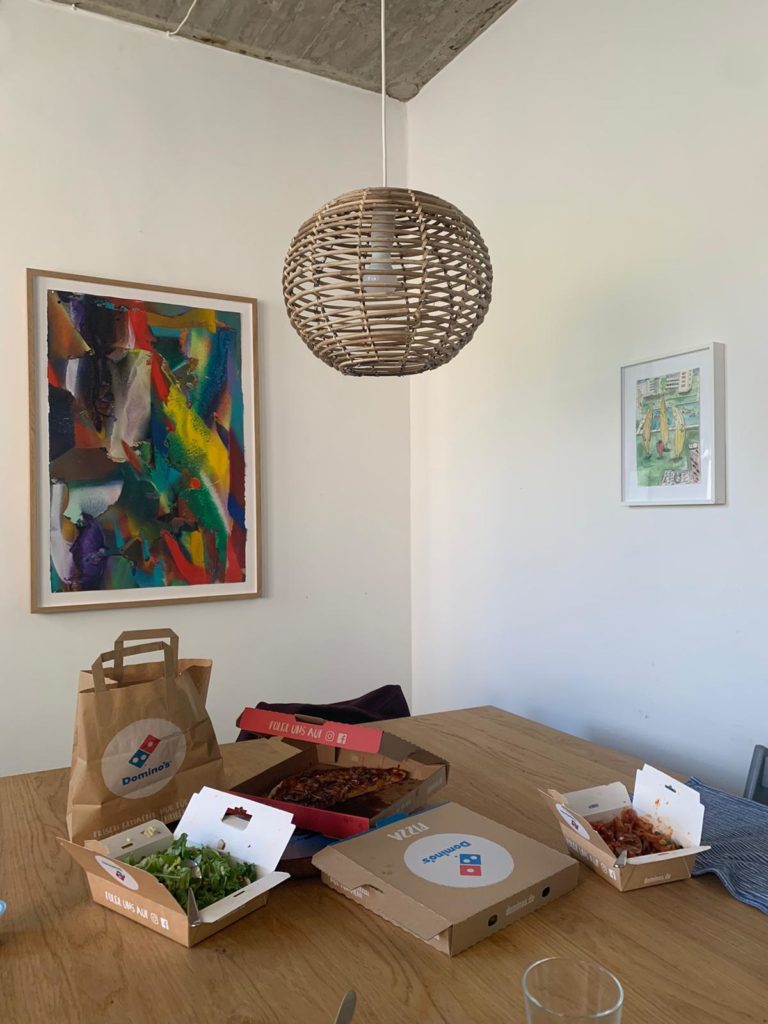
Lunch at the König residence: Domino’s against a backdrop of a work on paper by Katharina Grosse. On the right is a work by Amelie von Wulffen.
Next up was the daily sales meeting. Though conducted over Zoom, the meeting concerned Elmgreen & Dragset works that would be shown not just IRL in the gallery, but, ideally, IRL indefinitely—if they were sold to private museums or institutions.
“We’re discussing which sculpture parks to reach out to,” König said. “There’s still a big possibility right now for art in public.”
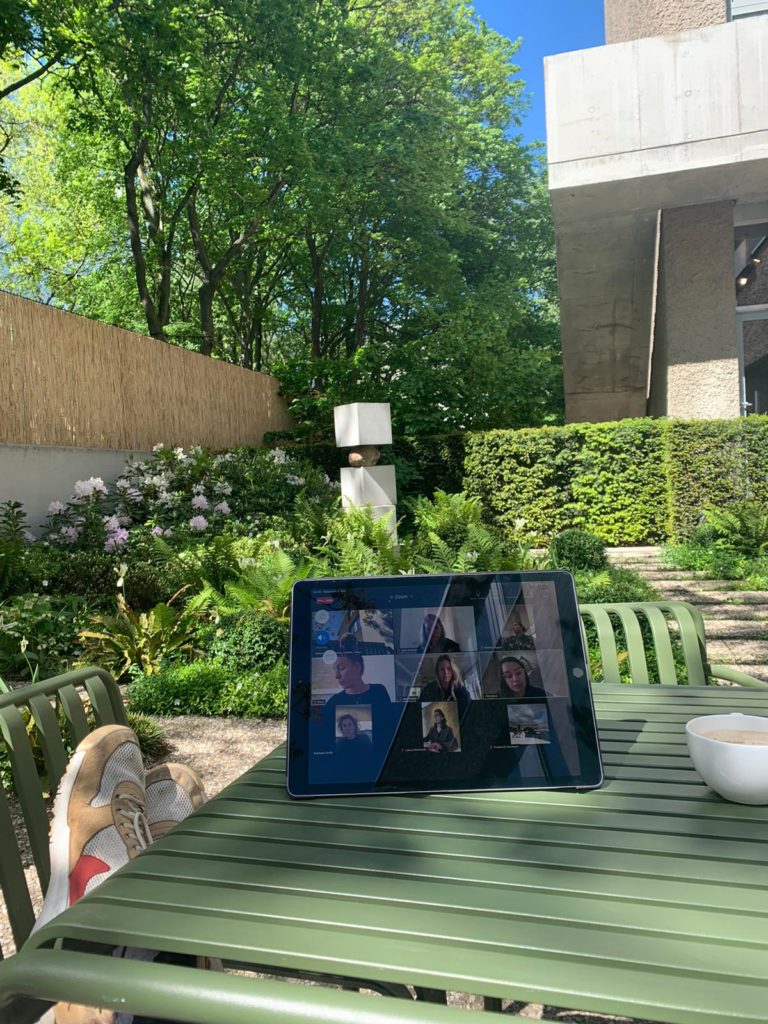
A sales meeting in the lockdown era.
As he recorded a voice message for me, he was sitting outside, drinking a coffee, his Nike Air Jordans propped up on the chair next to him. In the distance, his son climbed on a statue.
After the meeting, it was time to go inside to rig up his phone for his 10 a.m. Instagram Live series—the gallery refers to it by its hashtag,#10amseries—which consists of a chat between König and an artist or colleague. Every Tuesday through Sunday, since the middle of March, there have been two chats per day, one at 10 a.m. Berlin time and the other at 10 a.m. New York time. He’s gone live with all of his artists (the videos now doubling as efforts to drive online sales) as well as fellow dealers (Tim Blum, Emmanuel Perrotin, Esther Kim Varet) museum directors (Hans Ulrich Obrist and Klaus Biesenbach) and a number of prominent collectors (Andy Hall, Dennis Scholl).
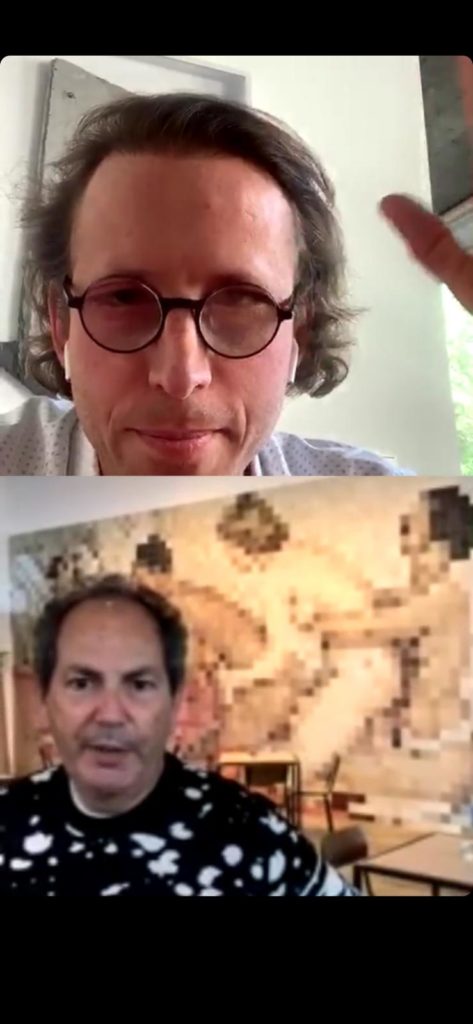
König and collector Gil Bronner in conversation on Instagram Live.
Today, the guest was Gil Bronner, the Düsseldorf-based collector whose private institution, the Philara Collection, has been housed in a former glass factory since 2016.
Wednesday also happened to be the VIP opening of the Frieze New York online viewing room, and while König didn’t have a “booth” in the fair, he wanted to check it out and maybe buy some work by younger artists. So he sat down on his Franz West sofa and fired it up on an iPad. He wasn’t too impressed.
“There’s a lot of problems navigating because it’s super super super slow, and once you’re inside one gallery, you can’t really move back and forth because it takes too long,” he said, scrolling through some works by Katharina Grosse in the Gagosian booth and Loie Hollowell in the Pace booth. “It’s not really a new experience. What I really miss in these online fair possibilities is a communications function to the dealer. I don’t know why they don’t implement it—it’s so easy to implement FaceTime on something like this.”

König exploring the Frieze online viewing room on his Franz West couch.
“If I couldn’t enjoy the Frieze online viewing room on a sofa by Franz West,” he said, “I wouldn’t enjoy it at all.”
As evening arrived, König walked over to the room where masked art handlers were deinstalling and rehanging the Galerie König online showroom, which offers a look at gallery inventory outside the normal exhibition schedule.
There, König took out a laptop and logged into Trello and Slack, two workplace-related apps that he implemented due to the shutdown but plans to use more going forward. Judging by his Trello interface, he’s got a busy two weeks ahead—there is set to be a real, live reception for Elmgreen & Dragset this Friday at the gallery in Berlin.
He then went over to the editions and merch shop, Edition König, where he was putting the finishing touches on his latest bit of swag: a paint-stained freestanding bar cart that artist Anselm Reyle made from leftover wood at his studio.
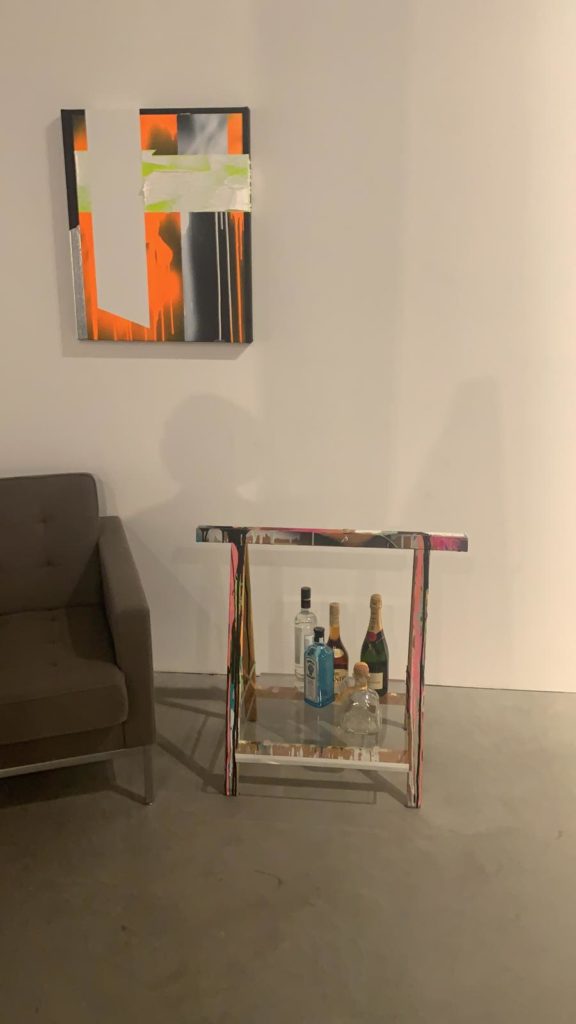
An Anselm Reyle bar cart at Edition König.
König ducked his head into the nave to check on the Elmgreen and Dragset tennis court before meeting downstairs with a Hamburg collector who’s building up a trove of large works for an outdoor sculpture park and wanted to check out the Tatiana Trouvé.
“He wanted to take it—unfortunately—only as a loan for his garden show,” König said.
As the sun began to set, König jumped into a car—he and Lena were allowing themselves to leave the compound for dinner.
“As a big surprise, for the second time today I left the house, the first time since eight weeks I think—because we are visiting a friend for dinner,” König told me from the passenger seat. “It’s really so weird to do that! It’s been so long.”
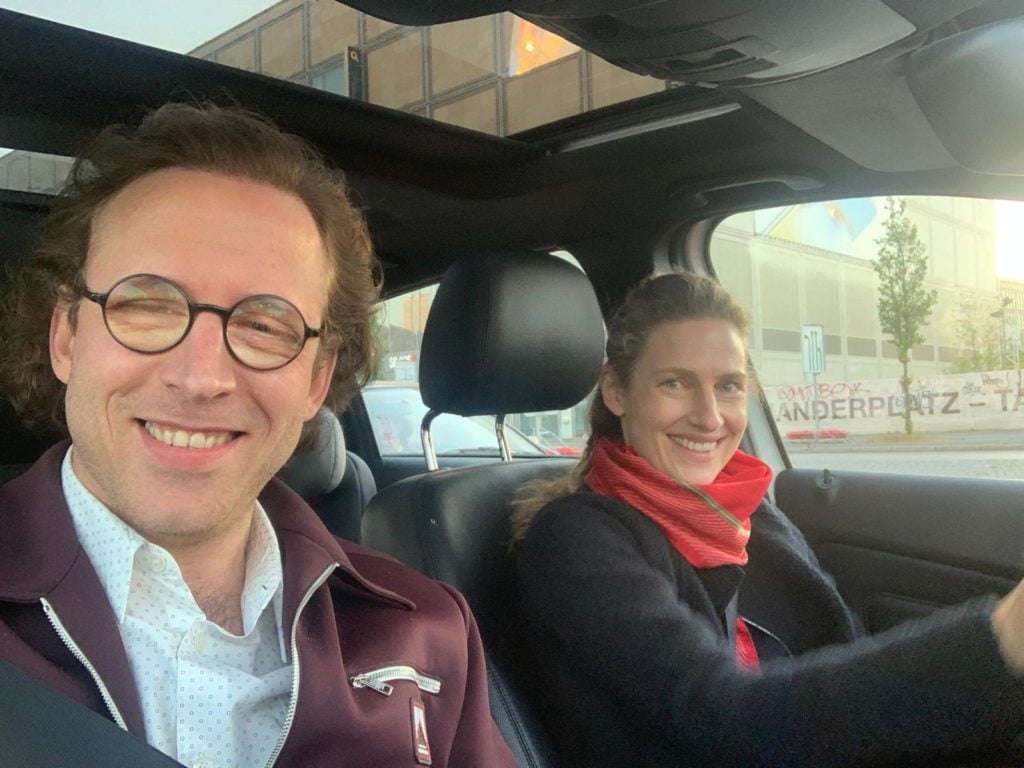
König and his wife Lena en route to dinner.
After dinner, he checked in once again on the exhibition, and saw that remarkable progress had been made: one of the Elmgreen and Dragset sculptures, of a man slumped in a wheelchair, had been placed on the tennis court and lit from above, creating an eerie sensation of being helplessly alone.
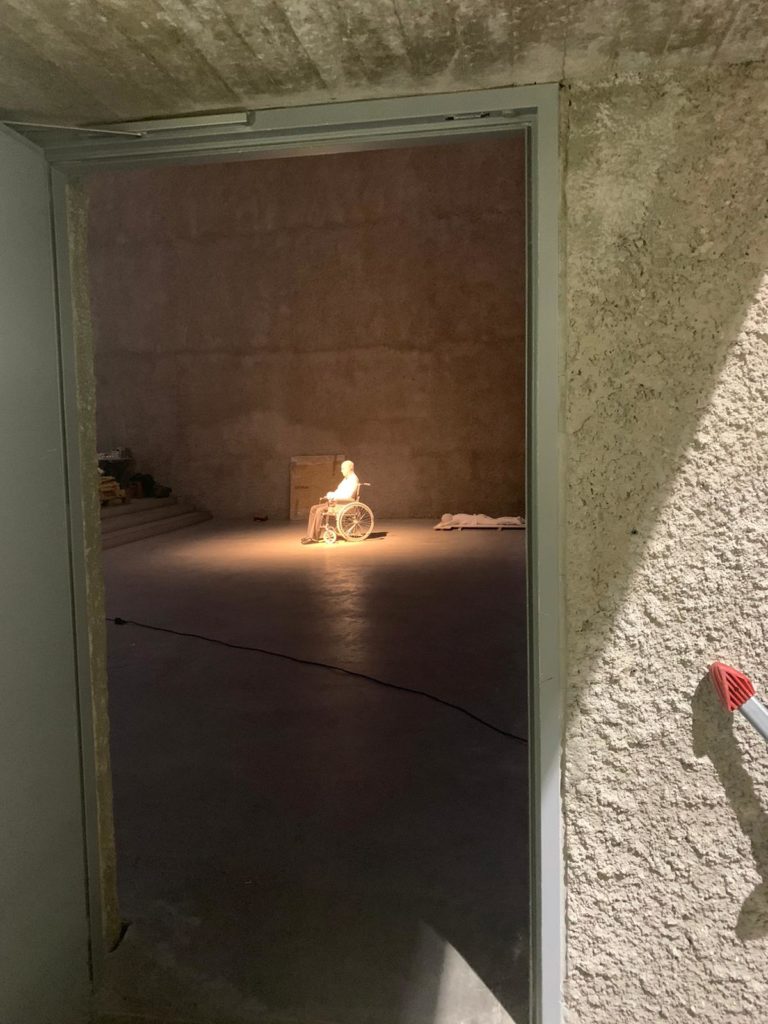
Elmgreen and Dragset’s installation-in-progress of Bogdan (2020), a work in bronze, lacquer, clothes, wheelchair.
“It was a long day,” König said. “So maybe one last picture and then that’s it?”
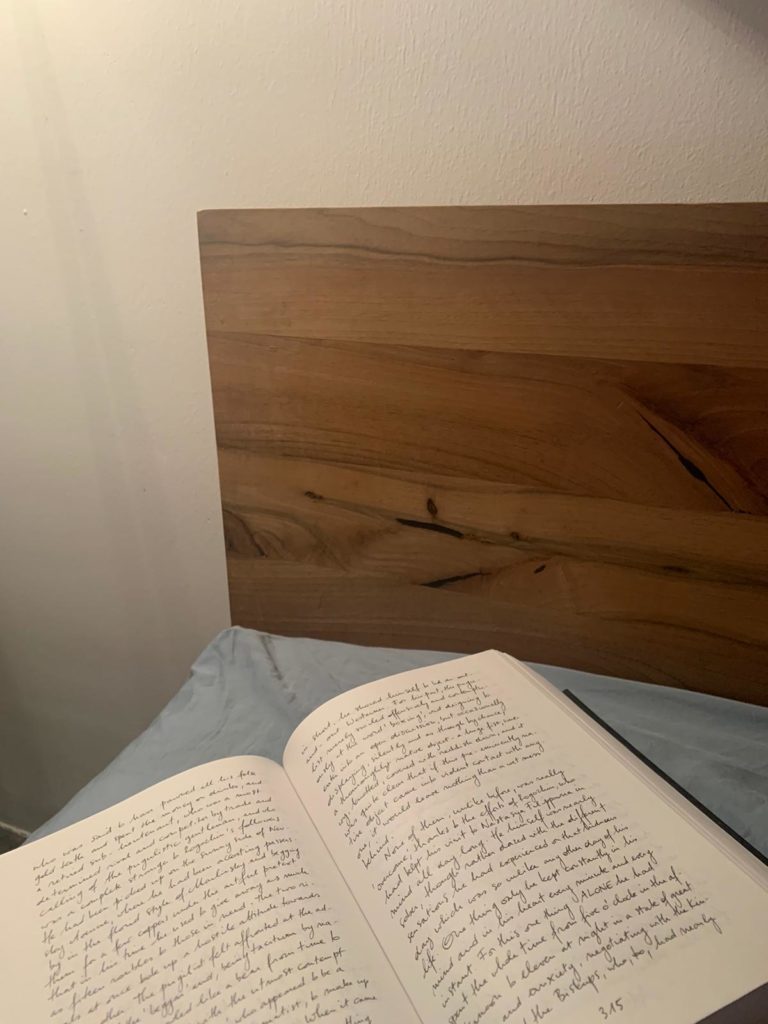
Bedtime reading.
König got in bed and curled up with some very art-world reading: Kris Martin’s handwritten, 1,500-page translation of Dostoevsky’s The Idiot—in which every mention of Myshkin is replaced by a mention of “Kris Martin”— and read until he fell asleep.